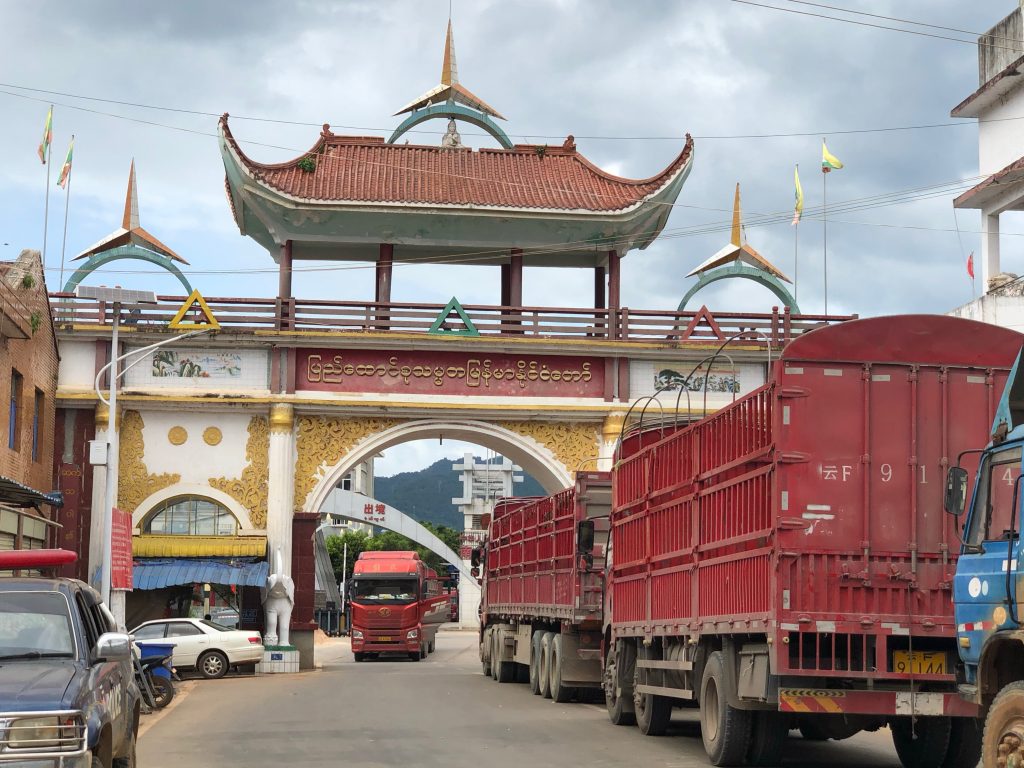∎ From 1 February to 16 December (2021)
What Matters No. 68
(This article is a translation of the original Burmese version published on the ISP-Myanmar Facebook page on December 18, 2021.)
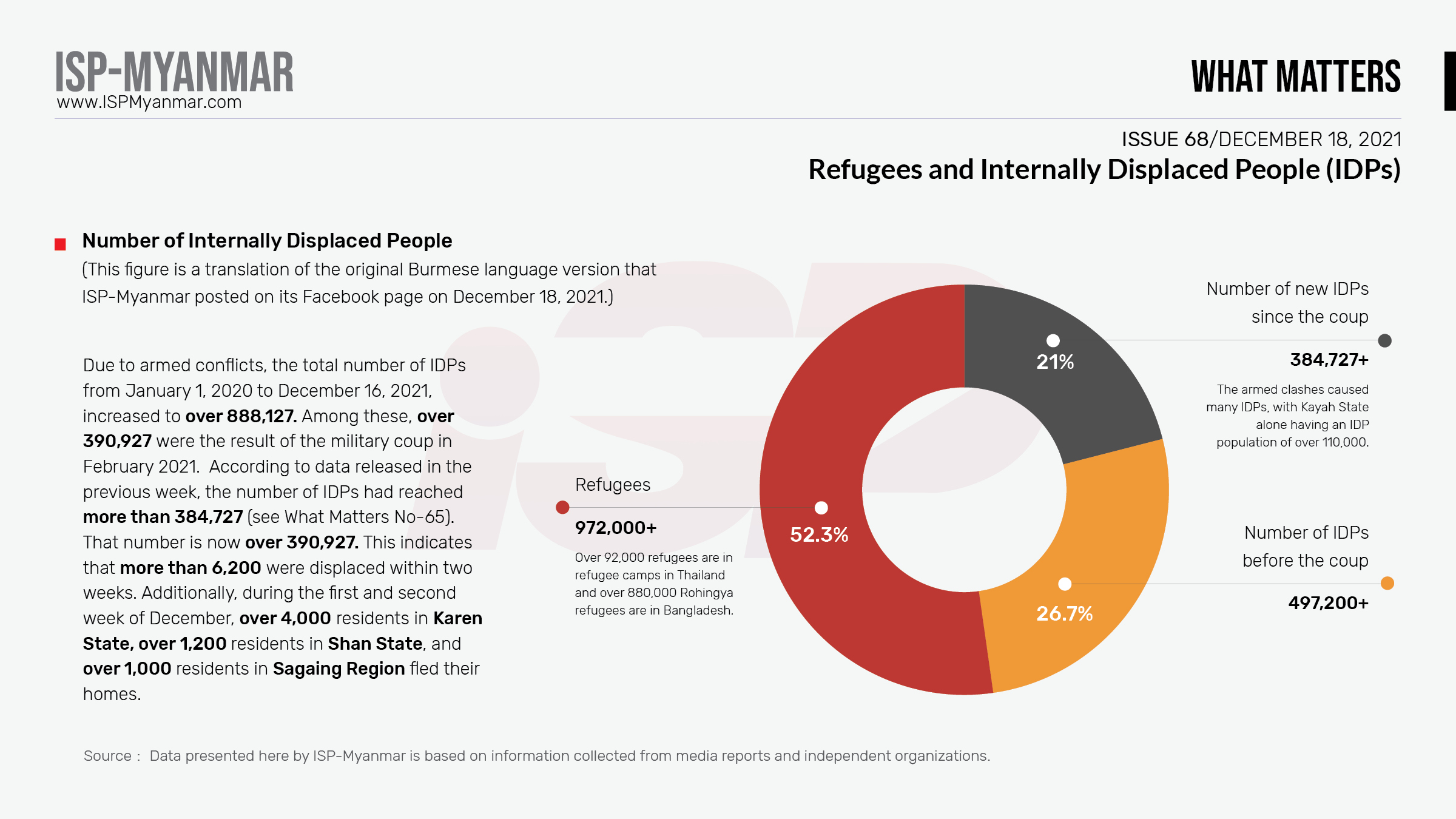
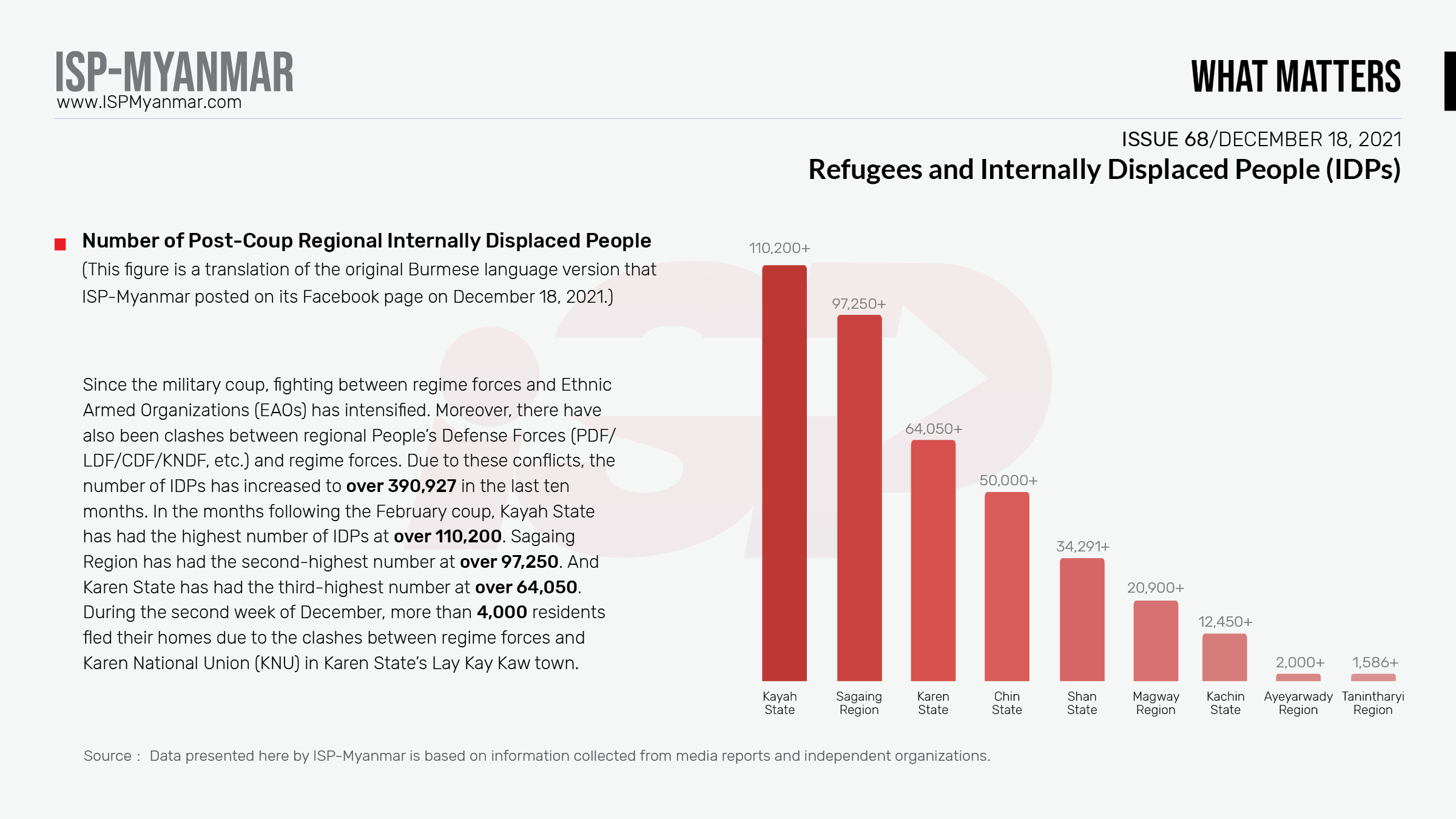
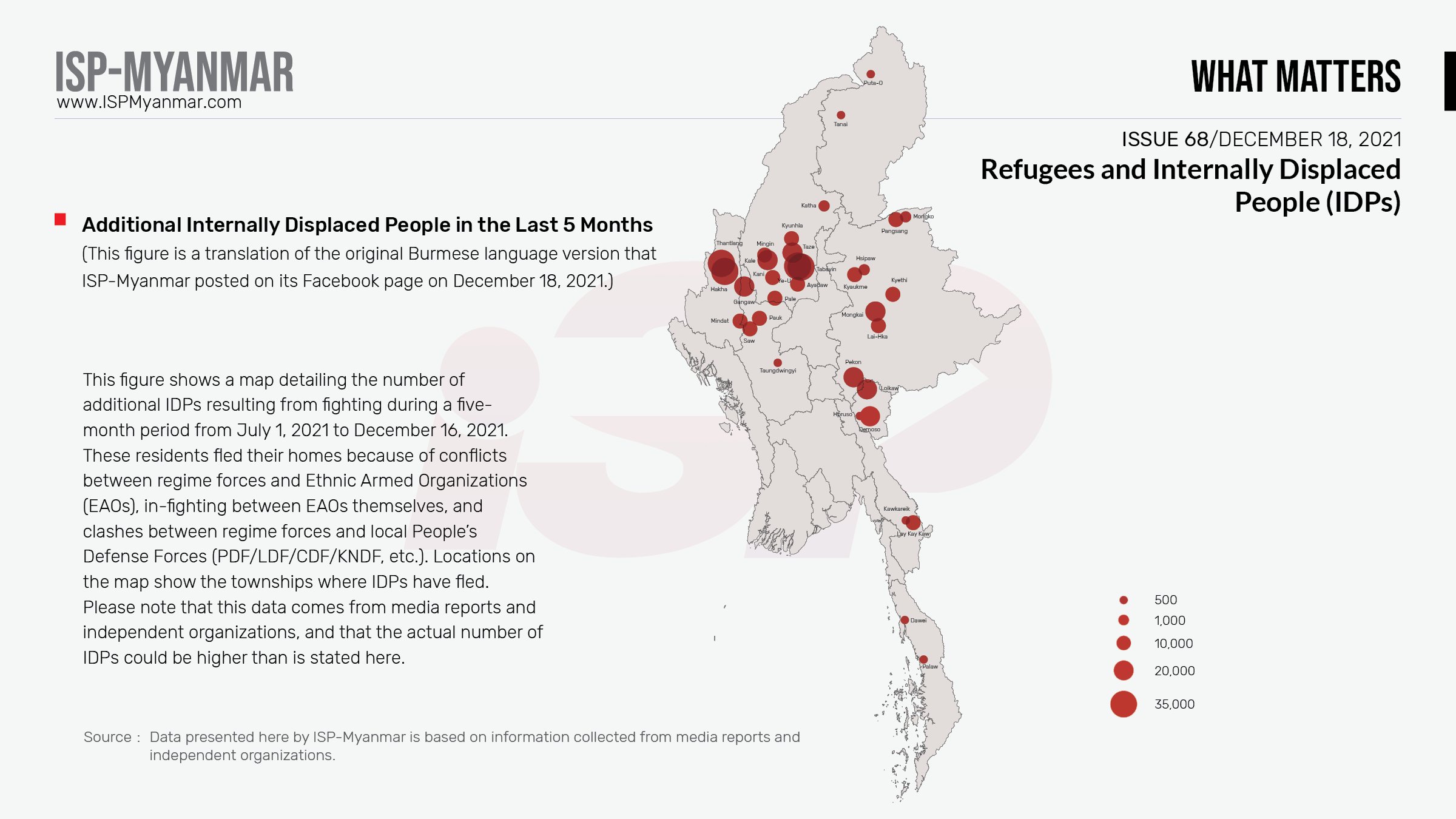
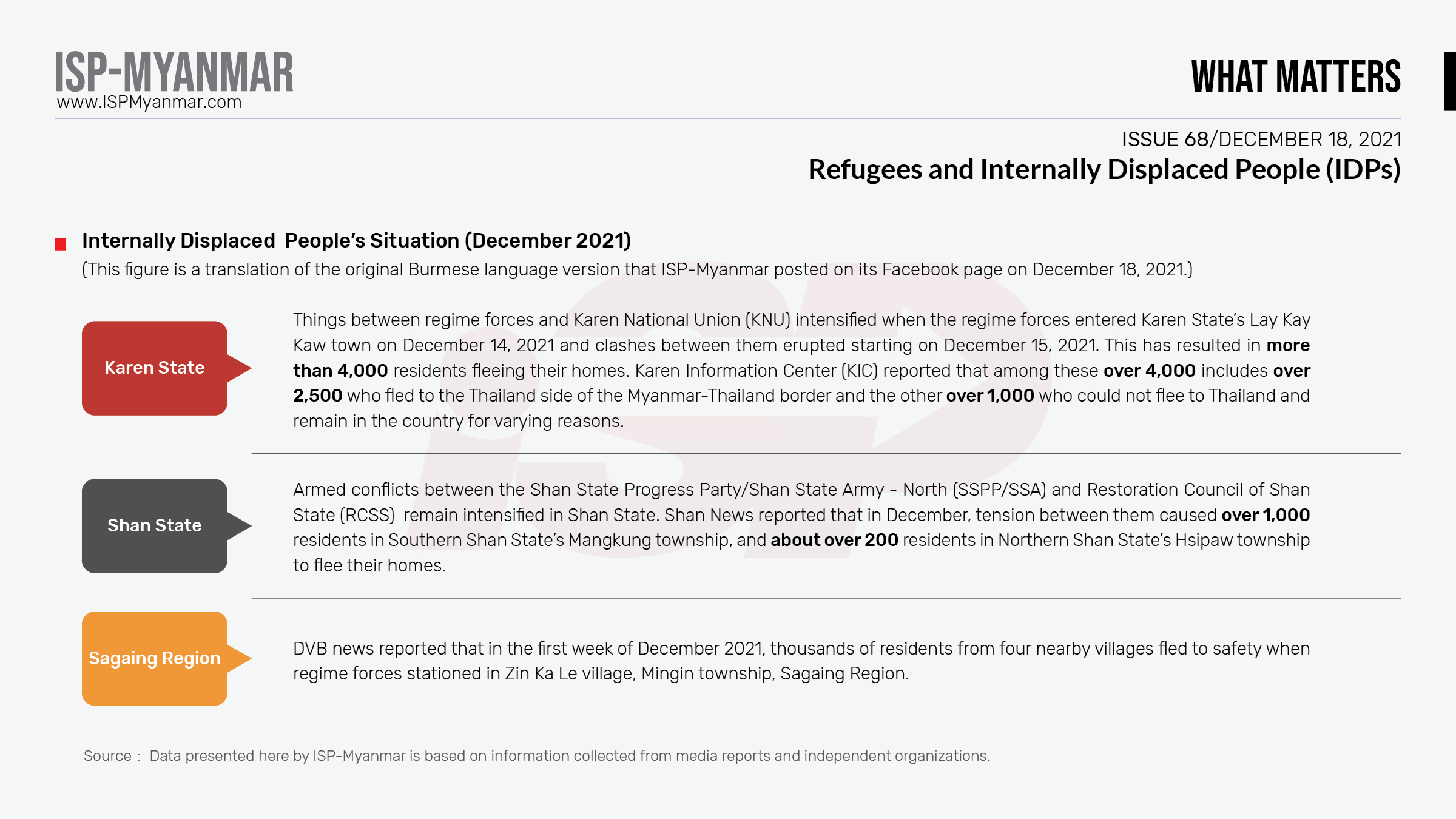
Since the military coup on 1 February 2021, public movements against military dictatorship have occurred across Myanmar, and they are still happening now in various forms. At the same time, there are fighting between Ethnic Armed Organizations (EAOs) and the SAC forces, as well as among EAOs in ethnic areas where EAOs are based. Moreover, clashes between local defense forces (PDF/ LDF/ CDF/ KNDF, etc.) and the SAC forces have increased in momentum. Together with the increased momentum of clashes and conflicts, the number of internally displaced people (IDPs) has increased, and humanitarian assistance is needed in emergency.
∎ Over 6,000 IDPs Increased Within Two Weeks
Armed conflicts across the country from the military coup on 1 February to 16 December of 2021 have made over 390,927 IDPs. Since the number of IDPs before the coup was over 497,200, it has made a total of over 888,127 IDPs in Myanmar. Moreover, there are over 972,00 in refugee camps on the borders of Bangladesh and Thailand.
The number of IDPs is increasing in areas where the fighting has become intense between EAOs, local defense forces, and the SAC forces since the coup. Kayah State has the largest number of IDPs with a total of over 110,200, while Sagaing Region has over 97,250, which is the second largest. Within the first and second weeks of December, the number of IDPs has increased by over 6,200.
∎ Situation in December
In the first week of December 2021, thousands of residents from four nearby villages fled to safety because regime forces stationed in Zin Ka Le village, Mingin township, Sagaing Region. Armed conflicts between the Shan State Progress Party/Shan State Army – North(SSPP/SSA) and (RCSS) remain intensified in Shan State, and it is reported that over 1,000 residents in Northern Shan State’s Mangkung township, and about over 200 residents in Southern Shan State’s Hsipaw township had to flee their homes. Things between the regime forces and Karen National Union (KNU) intensified when the regime forces entered Karen State’s Lay Kay Kaw town on December 14, 2021 and clashes between them erupted starting on December 15, 2021. This has resulted in more than 4,000 residents fleeing their homes. Among these over 4,000 includes over 2,500 who fled to the Thailand side of the Myanmar-Thailand border and the other over 1,000 who could flee to Thailand and remain in the country for varying reasons.
∎ Why does this matter?
By looking at the number of civilian fatalities and injuries, how they were killed and wounded, and the number of people displaced by fighting involving regime forces and EAOs, or within EAOs themselves, it is possible to examine whether or not armed forces have committed human rights violations from the perspective of transitional justice. In addition, by studying the post-coup situation, further research can be conducted to examine whether there has been a change in conditions related to Myanmar’s peace process.
∎ Other relevant readings
On-the-ground reports from ethnic news organizations and other independent media groups provide regular updates about conflict situations, their impact, and the collateral damage in the aftermath of the military coup. These include reports of renewed fighting in ethnic areas, civilian fatalities, and rising refugee and IDP issues on the ground. In addition, records and reports by United Nations organizations such as the United Nations Office for the Coordination of Humanitarian Affairs (UNOCHA), and other independent local and foreign organizations also provide information about the ongoing conflict situation in Myanmar.

